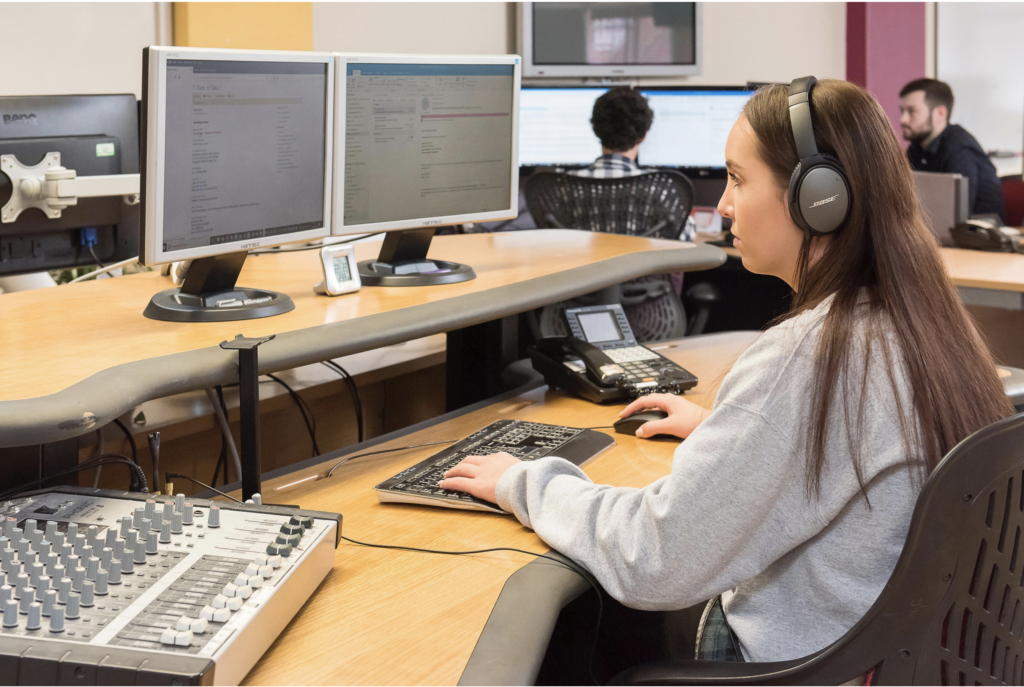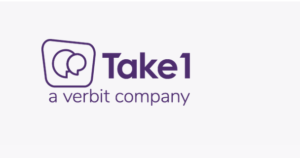M+E Daily

Take 1: Firmly Establishing Its North American Footprint
Story Highlights
Since 1998, Take 1 has been helping global media brands including ITV America, NPR and Warner Bros. Discovery reach wider audiences through its comprehensive portfolio of services.
Take 1 specialises in start-to-finish transcription and captioning services for video content, from the time the first scene is filmed to the final release on air. It is also a trusted provider of localisation and access services to the media and entertainment industry.
Take 1 also has an established presence in the over-the-top (OTT) market in both the U.S. and U.K., with nearly half of its customers providing content to streaming platforms in all languages.
Captioning and transcription services company Verbit acquired Take 1 in July 2022 as part of a strategy to become a world leader in those solutions.
 Although it’s been less than a year since Take 1 and VITAC became sibling companies as a result of that acquisition, they have quickly discovered they are greater than the sum of their parts.
Although it’s been less than a year since Take 1 and VITAC became sibling companies as a result of that acquisition, they have quickly discovered they are greater than the sum of their parts.
Take 1 CEO Lou Tapia recently spoke with MESA about the acquisition, partnering with VITAC, how Take 1 has been able to enhance and expand its services, and more.
MESA: After Take 1’s acquisition by Verbit in 2022, you have become increasingly aligned with sister company VITAC. what makes these two companies natural bedfellows?
Tapia: Like Take 1, VITAC was originally established as a family business and was started by current general manager Doug Karlovits’ father in 1986.
Now, VITAC is the largest provider of closed captioning and accessible communications in North America, responsible for captioning approximately 582,000 live program hours per year, and creating verbatim, precisely timed captions for 57,000 pre‐recorded programs annually. Their customers include every major broadcast network, most cable channels, streaming platforms, program producers, and production companies, among others.
Similarly, Take 1 was founded in Dom Bourne’s bedroom in 1998 and has grown into a leading provider of transcription, access, and localisation services to the media and entertainment industry.
We specialise in start-to-finish transcription and captioning services for video content, from the time the first scene is filmed to the final release on air and Take 1’s more than 2,000 customers include national and international broadcasters, cable networks, and streaming platforms, production houses, and social media outlets.
MESA: Can you explain in a nutshell how Take 1 is working with VITAC to provide a one-stop shop for media and entertainment companies’ transcription, access and localisation needs?
Tapia: Together, we boast more than 50 years of combined experience in the media and entertainment industry and provide a true one-stop shop for accessibility services including live and offline captioning, transcription, subtitling, audio description, translation, and dubbing services. Combining our capabilities to provide an end-to-end service means that our clients will also benefit from workflow efficiencies, faster turnaround times and world-class platforms for uploading media and managing projects.
 MESA: What markets is this being done in and why? Are any of those new markets for either Take 1 or VITAC? If so, which markets for which company?
MESA: What markets is this being done in and why? Are any of those new markets for either Take 1 or VITAC? If so, which markets for which company?
Tapia: For Take 1, our association with VITAC firmly establishes our geographic footprint in North America. It also allows us to enhance and expand our service offering. Working with VITAC has allowed Take 1 to now offer our clients world-class live captioning, which we previously didn’t provide.
For VITAC, partnering with Take 1 provides access to markets in the UK and Europe and gives the captioning company broader participation in the entire production process, from filming to international delivery.
It also provides them with access to our Liberty platform and the capability to leverage metadata to create workflow efficiencies.
MESA: Over the last couple of years there’s been a lot of technological development in transcription, localisation and access service provision – particularly around AI products. How has this affected your approach and how do you see this developing in the future?
Tapia: Obviously, artificial intelligence has a major role to play in media and entertainment services, but the application of these tools will be quite different in post produced content vs. live programming.
For example, in high-end TV, rather than using ASR and online translation tools to replace the roles that people play in access and localisation services, we might think of AI as a way to provide people with more time to do high-value work.
The role of AI could be as simple as using spell-check, capturing text on screen with optical character recognition tools or using time alignment to line up subtitle text with the corresponding audio.
If AI can do 90% of the low skill, heavy lifting then professional teams will have a lot more time for creativity.
After all, there’s nothing new about using computers to help us do our jobs more efficiently.
 When it comes to live workflows, where speed is essential, AI tools really come into their own.
When it comes to live workflows, where speed is essential, AI tools really come into their own.
This is where being part of a technology-first organisation like Verbit and partnering with VITAC is so important for Take 1.
VITAC and Verbit have recently developed a new live ASR captioning product which includes a variety of media-focused features that exceed industry standard ASR and meet caption quality regulations. Built on a custom, adaptable, and always-trained engine developed by captioning, speech, and machine-learning experts, this proprietary solution is designed specifically for broadcasters, networks, and content creators.
MESA: What are your plans for 2023? Any new products, services or events on the horizon?
Tapia: As well as continuing to support the media and entertainment industry with high quality transcription, access and localisation services in 2023, we’ll be supporting the rollout of VITAC and Verbit’s new live ASR captioning product to new clients across the globe.
We’ll also be attending a number of media and entertainment industry shows and events, including April NAB Show in Las Vegas and September’s IBC Show in Amsterdam.









